Current Events :












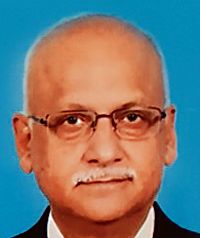
THE Global Security Initiative (GSI) is third in the Chinese series, after the Global Initiative on Data Security (GIDS) and the Global Development Initiative. It was announced by President Xi Jinping at the Boao Forum for Asia in April 2022. However, the roots of this initiative lie in Xi’s speech at the fourth summit of the Conference on Interaction and Confidence Building Measures in Asia (CICA) on May 21, 2014, wherein he outlined the concept of common, comprehensive, cooperative and sustainable security in Asia. He advocated a regional security architecture and indivisible security. Indivisible security, which originated in the Helsinki Accords of 1975, meant that the security of one nation is inseparable from that of other countries in its region.
When President Xi proposed the GSI, it contained six commitments: maintaining common, comprehensive, cooperative and sustainable security; respecting sovereignty and territorial integrity of all countries; respecting purposes and principles of the UN Charter; peacefully resolving differences and disputes between countries; maintaining security in traditional and non-traditional domains; and upholding indivisible security. Thus, there is continuity in China’s approach to security. The difference in the two articulations by Xi is that the earlier one was regional, while the GSI is global.
China’s foreign office mandarins explained the GSI soon after it was announced. It was followed by a concept paper on the initiative, then Foreign Minister Qin Gang’s speech at the Lanting Forum, titled ‘The Global Security Initiative: China’s Proposal for Solving Security Challenges’ on February 21 last year and Foreign Minister Wang Yi’s keynote address during the Munich Security Conference the same month. In the 10th Xiangshan Forum held in Beijing last October, Assistant Foreign Minister Nong Rong mentioned that more than 100 countries and international organisations had expressed support for the GSI, and it had been written into a large number of documents between China and them.
The concept paper proposed 20 priorities and mechanisms of cooperation and ‘suggestions’ for platforms. The priorities included measures in traditional and non-traditional security domains. The concept paper also suggested action plans.
China has claimed to have worked on four broad lines of action towards the implementation of the initiative. The first is active participation in and promotion of multilateral security cooperation. Under this, China’s contribution to UN peacekeeping, arms control and demining operations are cited. The second is China’s efforts at mediation between various countries and in conflict situations. The Saudi Arabia-Iran rapprochement, China’s positions on the Joint Comprehensive Plan of Action and the Russia-Ukraine and Hamas-Israel conflicts are quoted as its contributions. The third is China’s action and cooperation in non-traditional security areas, such as counterterrorism, cybersecurity, food security and climate change. Under this, many initiatives by China are mentioned, including the GIDS and the Global Initiative on Artificial Intelligence Governance. The last line of action is China facilitating the improvement of international security dialogue and exchange platforms and mechanisms. The China-Horn of Africa Conference, the Middle East Security Forum, discussions under the Shanghai Cooperation Organisation (SCO) and CICA and other forums have been cited.
According to Nong Rong, Beijing is likely to focus on expanding international consensus on common security, forging an effective paradigm for international security cooperation, exploring peaceful solutions to hotspot issues and promoting the reform of the global security governance system so as to ensure the steady and long-term progress of the GSI. A GSI forum on the lines of the Belt and Road Initiative (BRI) forum may be in the offing. The Dragon may encourage partners in the GSI to carry out bilateral and multilateral discussions under multilateral mechanisms like the UN, BRICS and the SCO. China’s efforts in the Hamas-Israel and Russia-Ukraine conflicts are likely to continue. Beijing may also strive to use the GSI as a platform for advancing the reform of the global security governance system.
From the explanations of the GSI, a few things stand out. One, the initiative was highlighted as Xi’s vision by almost all of them. Two, the GSI is part of “building a community with a shared future”, an overarching concept under which all the initiatives that China has announced in quick succession fit in. Three, indivisible security was given importance. Four, China is looking for an alternative security architecture. Five, GSI complements GDI, which in turn subsumes the BRI. Lastly, it appears that China is keen on leveraging the United Nations system to her advantage.
The GSI, like other initiatives announced by China, is prescriptive, with Beijing assuming a superior role. And that fits into her centenary goal of becoming a global power by 2049. It also looks as if China is trying to justify some of its actions through this initiative. There are many dichotomies between what China is proposing in this initiative and what it is practising, for example, its actions along the line of actual control with India and in the South China Sea.
India should closely monitor the progress that China is making on this initiative, as this will have direct security concerns for it. Though China supports a multipolar world officially, indications are that it prefers to be the unipole. Also, it does not seem to be willing to accept a multipolar Asia. Therefore, its efforts towards the GSI will impinge on India’s efforts to become a major power. India needs to think of alternative initiative(s) to ensure its place in the international domain, as it has come up with the idea of the India-Middle East-Europe Economic Corridor, which seems to be gaining momentum.
Views are personal
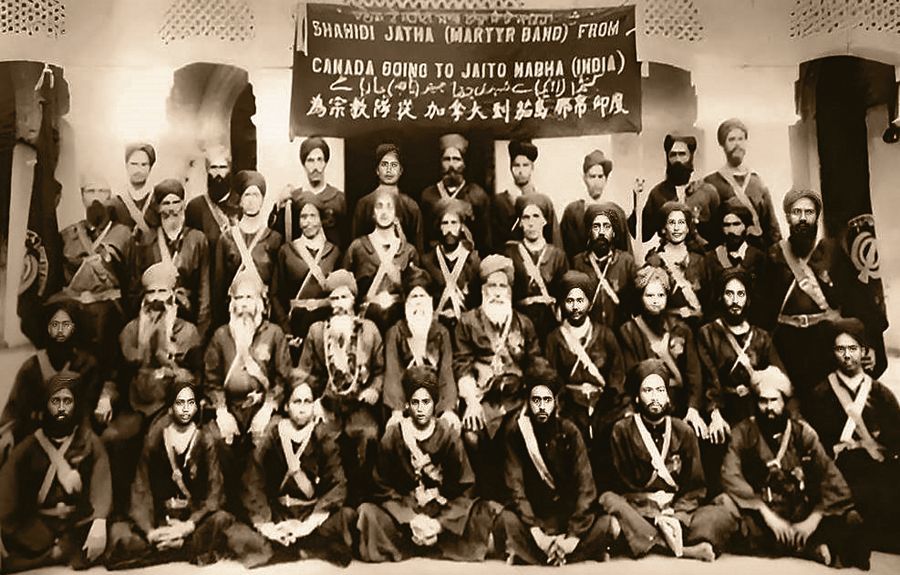

JAITO, a small town in the erstwhile princely state of Nabha, became the scene of a vigorous Akali Morcha. The Shiromani Gurdwara Parbandhak Committee (SGPC), with a view to vindicating its right to free worship and getting the Maharaja of Nabha restored to the gaddi (throne), decided to send jathas daily to Jaito from the Akal Takht at Amritsar. To begin with, jathas of 25 members each walked daily to Jaito after taking a pledge of non-violence before the Akal Takht, with the following aims: (1) To resume the interrupted Akhand Path at Gangsar, Jaito; (2) To suffer all hardships and tortures inflicted by officials for the sake of establishing the Sikh birthright to free congregation and worship in all gurdwaras.
The province’s British officials, who were watching with great concern the growing influence of the Akali leadership, noticed that the jathas were helping the SGPC impress upon non-Akali Sikhs that this was a purely religious programme. The officials were particularly worried that the journey of the Akali jathas to Jaito would be ‘of the nature of a triumphal procession’. Higher officials suggested that timely action would not only check Akali activities but also restore the supremacy of the bureaucracy. British authorities in the province were waiting for ‘sufficient evidence’ to implement the Secretary of State’s order “to put an effective stop to the Akali operations by the arrest and prosecution of all the organisers (of the Akali Movement) as abettors”. The Akali jathas’ march to Nabha provided them with a good opportunity to declare the Shiromani Akali Dal, the SGPC and other allied organisations ‘unlawful associations’. However, this measure could not check the zeal of the Akali volunteers and they continued to pour into Jaito. The Indian National Congress, which has been supporting the Akali Movement since the Nankana tragedy, decided to send a team of observers comprising Jawaharlal Nehru, AT Gidwani and K Santhanam to Jaito to get first-hand information about the developments. However, as soon as Nehru and his companions reached Jaito, they were arrested by the Nabha state officials, handcuffed and put behind bars. Nehru vividly describes his experiences in jail and the ‘crooked and unscrupulous ways’ of the state machinery. Having gained a first-hand impression about the Akalis, he became their admirer and wished to prove “worthy of their high tradition and fine courage”. The last paragraph of his statement drafted in the Central Jail, Nabha, on September 25, 1923, reads: “I rejoice that I am being tried for a cause which the Sikhs have made their own. I was in jail when the Guru-ka-Bagh struggle was gallantly fought and won by the Sikhs. I marvelled at the courage and sacrifice of the Akalis and wished that I could be given an opportunity of showing my deep admiration of them by some form of service. That opportunity has now been given to me and I earnestly hope that I shall prove worthy of their high tradition and fine courage. Sat Sri Akal.”
As soon as the jatha members reached the boundaries of the Nabha state, they were arrested and beaten up. But the members, as Nehru testified, gave an “amazing exhibition of courage and endurance… and never retreated a step, nor did they raise their hands against the police…” After being kept in custody for a few days, they were sent to the neighbouring areas of Babal Kanti in Rajasthan or to Rewari. Here, they were left “in a penniless condition to shift for themselves as best as they could”. According to a contemporary, “within seven months, this happened with no less than 5,000 Akali pilgrims”.
In order to intensify its agitation, the SGPC decided to send a bigger Shaheedi Jatha of 500 Akalis to reach Jaito on February 21, 1924, a day after the third anniversary of the Nankana tragedy. After making preliminary arrangements, the SGPC decided to despatch the jatha on February 9, 1924. Before its departure, the jatha, which comprised persons from various professions and classes from all parts of Punjab, was exhorted by the Jathedar of the Akal Takht “to remain perfectly non-violent in thought, word and deed”. According to the report of the Deputy Commissioner, Amritsar, “the members of the jatha were not regular hangers-on of the Darbar Sahib but included genuine fanatics”. Later, Dr Saifuddin Kitchlew, Pandit Dina Nath and other members of the Congress also joined the jatha. According to official reports, about 30,000 people witnessed the jatha set out from the Clock Tower at Amritsar.
When the jatha reached a spot about 150 metres from Gurdwara Tibbi Sahib on February 21, 1924, Wilson Johnston, the administrator of Nabha, arrived and ordered it to stop. But the jatha, which had taken a vow before the Akal Takht to resume the interrupted Akhand Path and was determined not to return without achieving its goal, continued to march towards the gurdwara. Johnston gave the signal to open fire. Savel Zimand, a correspondent for The New York Times who joined the jatha at Bargari, 15 km from Jaito, wrote: “It was at 2:25 pm that the firing started. The firing was in regular volleys and there were no desultory shots. The first round of firing lasted for full two minutes, i.e., from 2:45 to 2:47 pm. The second round of firing started at 2:55 and it lasted for full three minutes.”
According to Prof Ruchi Ram Sahni, then a trustee of The Tribune: “Then followed a scene unique in the history of the world for the calm restraint, cool courage and a remarkable capacity for suffering in a righteous cause displayed by the Sikh victims of the official fury.”
Firing on the peaceful Shaheedi Jatha consisting of men and women, including those who travelled all the way from Canada, China and other countries, led to the martyrdom of 22 people, including a child being carried by his mother. Bibi Balbir Kaur left her dead child by the roadside and continued to march forward before she met the same end. This was described by a foreign correspondent as a unique portrait of courage and sacrifice.
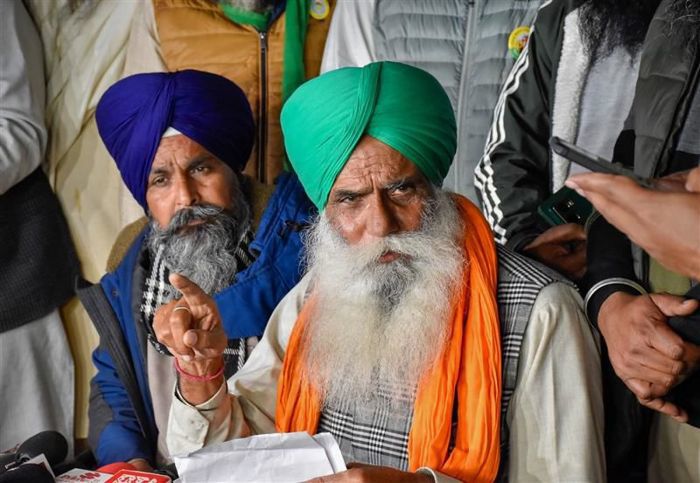
A panel of Union ministers proposed the purchase of pulses (tur, urad and masoor), maize and cotton crops by government agencies at the minimum support price (MSP) for a five-year period after entering into an agreement with farmers. PTI file photo
A panel of Union ministers proposed the purchase of pulses (tur, urad and masoor), maize and cotton crops by government agencies at the minimum support price (MSP) for a five-year period after entering into an agreement with farmers. The offer was made during the fourth round of talks between the Centre’s representatives and farmer leaders, who have rejected it as they want a legal guarantee for procurement at the MSP for various crops.
The government has tried in vain to pacify the protesting farmers, who have upped the ante in the run-up to the Lok Sabha elections. The proposal betrays the ground reality: the MSP regime and assured procurement have largely remained confined to wheat and paddy. Year after year, the government has been upwardly revising the MSP for over 20 crops — including wheat, paddy, pulses, maize and cotton — on the basis of recommendations of the Commission for Agricultural Costs and Prices. However, farm unions have repeatedly rejected the ‘paltry’ hike, even as farmers suffer losses whenever their produce fetches prices below the MSP.
In 2015, the Shanta Kumar-led High-Level Committee on Restructuring of FCI had urged the government to revisit the MSP policy. The panel had said: ‘Effectively, price support operates primarily in wheat and paddy and that too in selected states. This creates highly skewed incentive structures in favour of wheat and paddy.’ The committee had noted that wheat-paddy procurement did not directly benefit more than 6 per cent of India’s agricultural households. Indeed, this lopsided system continues to hamper crop diversification, besides leaving the majority of the nation’s farmers at the mercy of unscrupulous market forces. The government’s MSP plan for five crops was a non-starter in the absence of a robust system for guaranteed nationwide procurement. The larger objectives of enhancing food security, increasing farmers’ income and reducing dependence on imports can be achieved if the glaring anomalies in the MSP regime are removed.
he Central Government on Wednesday said it was ready to hold fifth round of talks with farmers, even as protesting farmers resumed their “Dilli Chalo” march from the Shambhu border near Ambala in Haryana.
Related News
“The government is ready for the fifth round of talks on all issues after the fourth round. The problem can be solved only through dialogue. And it is important to maintain peace”, the Union Agriculture Minister Arjun Munda shared this message in Hindi on his account on X.
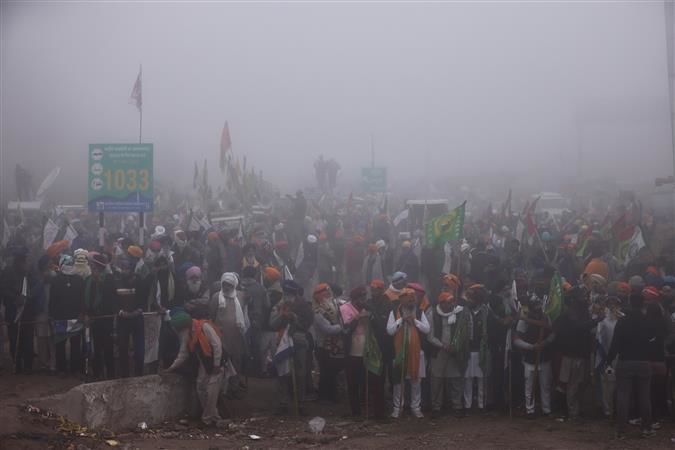
The ministers message came at 11.04 am as the farmers had given the call to resume their protest march towards Delhi at 11.00 am. However, no schedule for the fifth round of talks was shared by the government yet as it might be waiting for farmers’ response.
The fifth round of talks will be crucial as the farmers have already rejected government’s offer of procuring five crops at Minimum Support Price (MSP) for five years.
In another post the minister wrote, “After the fourth round, the government is prepared to discuss all issues in the fifth round, such as the demand for MSP, crop diversification, the matter of stubble burning, and negotiations on FIR. I invite the farmer leaders again for discussions. It is essential for us to maintain peace.
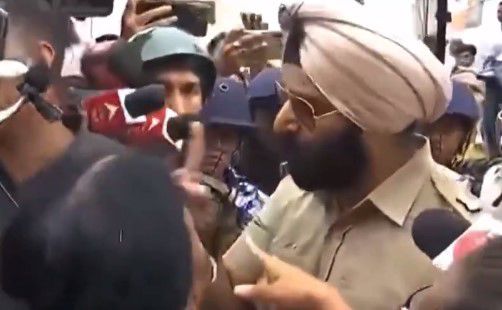
Kolkata, February 20
A Sikh IPS officer, who was deputed to prevent senior West Bengal BJP leader Suvendu Adhikari from visiting restive Sandeshkhali in North 24 Parganas district, on Tuesday slammed saffron party activists for allegedly dubbing him as a ‘Khalistani’.
BJP MLA Agnimitra Paul, accompanying Adhikari, claimed that the police officer wasn’t fulfilling his duties, but dismissed the allegation that BJP supporters called him a ‘Khalistani’.
“Just because I am wearing a turban, you people are calling me a Khalistani? Is this what you have learnt? If a police officer wears a turban and performs his duty honestly, he becomes a Khalistani for you? Shame on you,” IPS officer Jaspreet Singh was heard saying to the BJP workers.
“I am just doing my job. Did I say anything about your religion; why are you speaking about my religion?” he said.
Meanwhile, Chief Minister Mamata Banerjee asserted the BJP’s “divisive politics has shamelessly overstepped constitutional boundaries”, and condemned the “audacious attempt to undermine the reputation of Sikhs”.
“As per @BJP4India every person wearing a TURBAN is a KHALISTANI. I VEHEMENTLY CONDEMN this audacious attempt to undermine the reputation of our SIKH BROTHERS & SISTERS, revered for their SACRIFICES and UNWAVERING DETERMINATION to our nation,” she posted on X.
“We stand firm in protecting Bengal’s social harmony and will take stern lawful measures to prevent any attempts to disrupt it,” the CM said.https://384d8e4147a6427a54f60bd080e0f979.safeframe.googlesyndication.com/safeframe/1-0-40/html/container.html
The BJP, however, denied the charge and accused the police officer of not performing his duty as per the Constitution.
“No one has abused him or used the word ‘Khalistani’. He is trying to make an issue,” Paul said.
Later, members of the Sikh community staged a demonstration outside the BJP’s state headquarters at Muralidhar Lane in Kolkata in protest against the alleged jibe.
ADG & IGP (South Bengal) Supratim Sarkar claimed it was a “deliberate and malicious act” intended to outrage the religious feelings of a community.
“Because someone is wearing a turban, you cannot call that person ‘Khalistani’. You cannot do that. This is just unacceptable. If needed, we will take legal steps,” Sarkar said.
Adhikari, the Leader of the Opposition in the state assembly, reached Sandeskhali block, after being granted permission by a division bench of the Calcutta High Court to visit the trouble-torn area.
Sandeshkhali has been witnessing protests, after local women accused absconding Trinamool Congress leader Shajahan Sheikh and his supporters of “sexually assaulting” them under coercion.
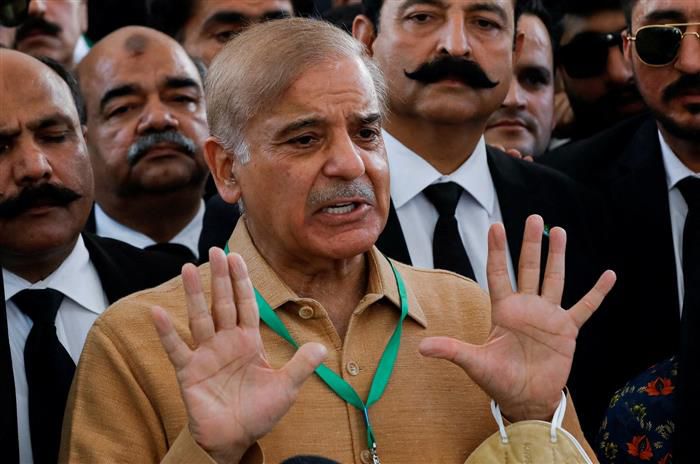
Islamabad, February 21
In a breakthrough that could end the political uncertainty in Pakistan, the Pakistan Muslim League-Nawaz and the Pakistan Peoples Party have agreed on a power-sharing deal to form a new coalition government after intense negotiations following a fractured poll verdict.
In a joint news conference late Tuesday night at Zardari House here, Pakistan Peoples Party (PPP) Chairman Bilawal Bhutto-Zardari announced that Pakistan Muslim League-Nawaz (PML-N) president Shehbaz Sharif, 72, will assume the role of the prime minister once again.
Similarly, PPP co-chairman Asif Ali Zardari, 68, will be the joint candidate for the President’s Office.
“The PPP and PML-N have achieved the required number, and (now) we are in a position to form the government,” Bilawal told reporters without revealing the number of lawmakers they have in the National Assembly after the February 8 elections.
To form a government, a party must win 133 out of 265 contested seats in the 266-member National Assembly or the lower house of Parliament.
He said former prime minister Imran Khan’s Pakistan Tehreek-e-Insaf (PTI) party-backed independent candidates and Sunni Ittehad Council (SIC) failed to achieve a simple majority in Parliament to form a government in the Centre.
Bilawal hoped that the news of the political alliance with the PML-N to form a coalition government would lead to a positive market response as the cash-strapped country faced a hung Parliament after the elections.https://34ff87a3d3ea8b7a997b34e95a4e9504.safeframe.googlesyndication.com/safeframe/1-0-40/html/container.html
Last week, the PML-N in a surprise move announced that the party supremo and three-time former premier Nawaz Sharif nominated his younger brother Shehbaz as a candidate for the slot of prime minister. Nawaz, 74, was earlier confident to secure a record fourth term. However, his party failed to win enough seats to form a government on its own.
Independent candidates – a majority backed by 71-year-old Khan’s Pakistan Tehreek-e-Insaf (PTI) party—won 93 National Assembly seats.
The PML-N won 75 seats while the PPP came third with 54 seats. The Muttahida Qaumi Movement Pakistan (MQM-P) has 17 seats.
Speaking at the press conference, Shehbaz asserted that his party now has the “required numbers” with the PPP to be in a position to form the next government as he thanked the leadership of the two parties for the positive conclusion to the talks.
The former prime minister emphasised the unity between the two parties, noting that they were well-positioned to form the government at the Centre.
Shehbaz, who led a coalition government for 16 months before the elections, also said that he had asked the PTI-backed winning candidates to prove their majority and form the government, but they didn’t have sufficient numbers.
The PML-N stalwart also thanked Bilawal and Zardari for their cooperation. Shehbaz said that both parties decided that Zardari would be fielded as the joint candidate for the post of president.
Responding to a question about whether the PPP was getting any portfolios, Shehbaz said that the Bilawal-led party has not demanded any ministry from the first day, The News International reported.
“Parleys take place between two parties and issues are resolved through (mutual consultation). It doesn’t mean that we accept their demands or they accept ours; they have their views but reaching a middle point is the real political success,” he said.
The former prime minister added that the decisions on the “offices” would be made mutually later under the guidance of PML-N supremo Nawaz Sharif and the PPP’s top leadership, the report said.
Shehbaz also thanked the Muttahida Qaumi Movement-Pakistan, Istehkam-e-Pakistan Party, and the Pakistan Muslim League-Quaid, who will be part of the next government.
He vowed the upcoming coalition government would restore the country’s economy and fight against the menace of terrorism.
The PML-N leader said that the alliance would bring economic progress and development to the country. He said they would take measures to increase agricultural and industrial production in the country.
Shehbaz stressed that the previous unity forged during the 16-month government paved the way for their current collaboration, united in their commitment to addressing the concerns of the Pakistani people.
“We will not disappoint the people of Pakistan,” the president of the PML-N said.
The details were not provided but sources said that PPP was still reluctant to be part of the government as it agreed to have its president, chairman senate, and governors in Punjab and Khyber-Pakhtunkhwa and chief minister in Balochistan.
The PML-N would have complete charge of the federal government with the prime minister and speaker. It will also get governors in the Sindh and Balochistan provinces.
The two also agreed to form a coalition government in Balochistan with an equal share in the cabinet.
Meanwhile, in a post on X, 71-year-old Khan’s party hit out at the newly cemented PPP, PML-N alliance as ‘PDM 2.0’ “PDM 2.0 = #MandateThieves.” The announcement of the alliance came a day after the latest round of talks between the top leaders of the two parties ended inconclusively on Monday as both sides failed to reach a consensus on a power-sharing formula to form a coalition government.
Shehbaz said that the journey ahead for the new government would not be easy but fraught with many difficulties and obstacles. He asserted that the coalition alliance will tackle them together, the Dawn newspaper reported.
Zardari, who was president from 2008 to 2013, has said the struggle of the political alliance bidding to make the next government is for the sake of the country and future generations.
The February 8 general elections have been controversial, with several serious allegations of widespread rigging to alter the results.
Imran Khan’s sister Aleema Khan said the PTI chief has termed the February 8 elections “mother of all rigging”.
Aleema met Imran Khan at Adiala Jail on Tuesday. She told reporters that the people’s mandate was “stolen” following the elections. She also said that Imran Khan has strongly condemned the suspension of internet services, which he claimed was used to “hide the real results”.
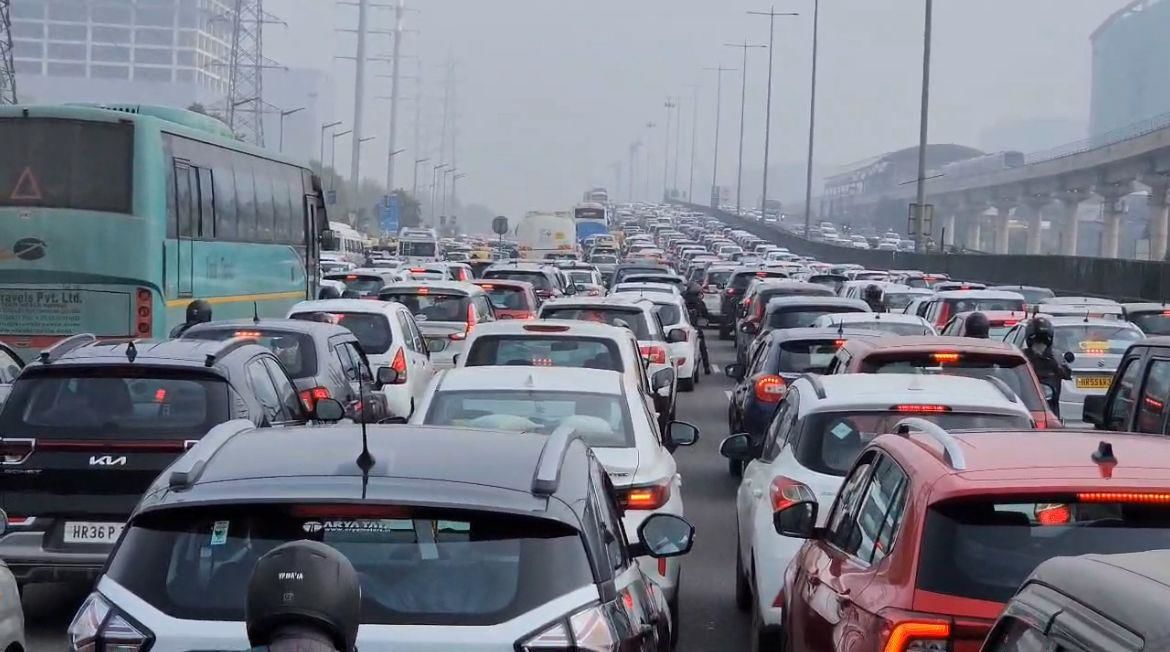
Gurugram/New Delhi, February 21
Traffic jams were witnessed on several points in Gurugram and Delhi as police and paramilitary personnel equipped with anti-riot gears, and multiple layers of barricades were placed to deter the farmers’ ‘Dilli Chalo’ march on Wednesday.
A massive traffic jam was witnessed on the Delhi-Gurugram-Sarhaul border and other roads as the entry was restricted by Delhi police.
Meanwhile, barricades were relaxed for some time after the jam reached Rajiv Chowk on Jaipur Expressway.
Traffic was also hit on Delhi-Bahadurgarh and several other roads after heavy deployment was made to ensure law and order.
Massive traffic jams were also witnessed at key points in Delhi, including ITO, Dhaula Kuan, Rajokri, MB road, Ashram, Mathura road.
“NH-44 beyond Singhu Border has been closed for general traffic. Other connected roads going towards NH-44 — Sonipat/Panipat are also affected,” said a senior traffic police official.
However, two lanes of NH-9 and one lane of NH-24 at Ghazipur Border are open for the general public.
The traffic police said, “Vehicular traffic going to Haryana on NH-44 and reached Apsara Border/Maharajpur Border may use/divert to Dabur Chowk Mohan Nagar- Ghaziabad – Hapur Road – GT Road – Delhi Meerut Expressway (25 km) – Dasna- take left turn to Eastern Peripheral Expressway (44 km) – Rai Cut and reach NH- 44, total 69 kms.
“Vehicular traffic going to Haryana on NH-44 and reached Loni Border may use/divert to Inderpuri Loni – Puja Pavi – Panchlok – Mandola – Musoorie- Khekra (29 KM) – left turn to Eastern Peripheral Expressway (19 km)- Rai cut (NH-44), total 43 kms,” it said.
“Vehicular traffic going to Haryana on NH-44 and Sabhapur Border – to take service lane Delhi Dehradun Expressway (K Mandola Mussoorie- Khekra (14 km) Expressway (19 km)- Rai cut (NH-44) Total 39 KM.
“Vehicular traffic going to Haryana on NH-44 and Sonia Vihar Border straight to Tronica City Marg Tronica City take left turn Delhi-Dehradun Expressway (7 km) Mandola Musoorie Khekra (10 km) – left turn to Eastern Peripheral Expressway (19 KM)- Rai cut (NH-44),” said traffic cops.
“Vehicular traffic going to Haryana on NH-44 and reached Bhopura Border may use/divert to Loni Bhopura Road – Koyal Enclave Thana Teela Morh Loni- Banthla flyover Hanuman Mandir Loni- take U turn towards Puja Pavi Panchlok -Mandola – Musoorie- Khekra (26 KM) left turn to Eastern Peripheral Expressway (19 KM)- Rai cut (NH-44).
“Traffic coming from Ghaziabad towards Delhi may enter from Maharajpur Border near ISBT Anand Vihar via Vaishali – Kaushambi. Traffic coming from Ghaziabad towards Delhi from Ghazipur border may also enter from Khora Colony, Mayur Vihar Phase-III via paper market, Pragati Marg, Mayur Vihar Phase,” they said.
“Traffic coming from Delhi and going to Ghaziabad through Gazipur border may take either Pushta Road in front of Akshardham temple or from Patparganj Road/Mother Dairy Road or from Chaudhary Charan Singh Marg ISBT Anand Vihar and may exit from Maharajpur or Apsara border in Ghaziabad,” traffic cops added. — with agencies
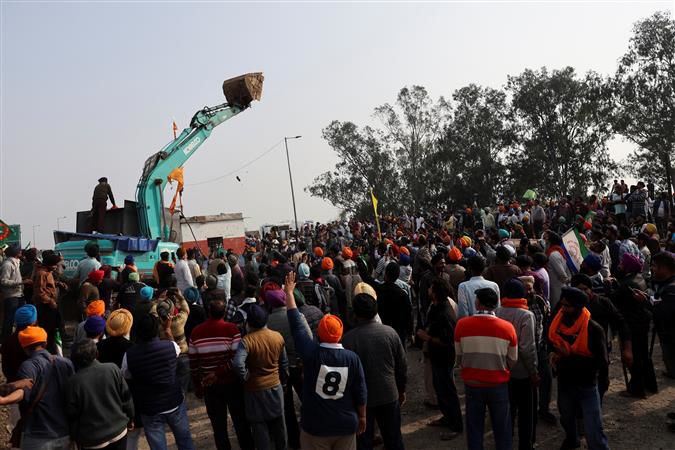
Chandigarh, February 21
The Haryana Police on Wednesday asked owners of excavators to withdraw their machines from the protest site, where farmers are set to resume their ‘Delhi Chalo’ march, else they will be held liable for action.
Related News
According to police, these excavators might cause harm to security personnel deployed at the two border points of Punjab and Haryana if protesting farmers used them.
“For owners and operators of Poclains,JCBs: Please do not provide your equipment to the protestors and withdraw them from the protest site if already done, as they may be used to cause harm to security forces. It is a non-bailable offence and you may be held criminally liable,” said police in a post on X.
Farmers, protesting at the two border points of Punjab and Haryana, will resume their ‘Delhi Chalo’ march on Wednesday after they rejected the BJP-led Centre’s proposal for procuring pulses, maize and cotton at the MSP by government agencies for five years.
The Haryana Police on Tuesday urged its Punjab counterparts to seize bulldozers and other earthmoving equipment from the interstate border which they say protesters will use to break barricades.
These could pose a threat to the security forces deployed at the border, Haryana Director General of Police Shatrujeet Kapoor said in an urgent communication to his Punjab counterpart Gaurav Yadav.
Later, in a communication to senior police officers, the Punjab DGP said that no JCBs and other heavy earthmoving equipment should be allowed to reach Khanauri and Shambu border points as inputs indicate that the protesters plan to break barricades and enter Haryana.
“It is reliably learnt that heavy earthmoving equipment, including poclain (digger), JCB etc, that have been further modified/armour-plated have been acquired by protesting farmers and have been deployed at the border locations where the protesters are camping right now,” the letter written by the Haryana DGP stated.
“These machines are meant to be used by the protesters to damage the barricades thereby posing serious danger to the police and paramilitary forces deployed on duty and are likely to compromise the security scenario in Haryana,” it said.
“In view of this, you are requested to take all necessary steps to immediately seize these machines from the protesting sites at the borders and take all preventive steps so that the poclain/JCB machines and other heavy machinery which may cause harm to security forces are not allowed to reach the protesting sites,” it added.https://5f7eebab409579382c0731fc00657ca2.safeframe.googlesyndication.com/safeframe/1-0-40/html/container.html
Thousands of farmers, who began the march to Delhi on February 13, were stopped at the Haryana border itself, where they clashed with security personnel. The farmers have been camping at the Shambhu and Khanauri points on Punjab’s border with Haryana since then.
The Samyukta Kisan Morcha (Non-Political) and the Kisan Mazdoor Morcha are spearheading the ‘Delhi Chalo’ march to press the government to accept their demands, including a legal guarantee of MSP for crops and a farm loan waiver.
The last round of talks between farmers and the government ended past midnight on Sunday when a panel of ministers proposed buying five crops—moong dal, urad dal, tur dal, maize and cotton—from farmers at minimum support price (MSP) for five years through central agencies.
Shambhu/Chandigarh, February 21
A 20-year-old protester was killed while 25 others were injured on Wednesday after the Haryana police fired rubber bullets and lobbed tear gas shells on the protesting farmers at Khanauri border.
Related News
According to officials, the deceased identified as Shubhkaran Singh of Baloke in Bathinda succumbed to his injuries at Patiala’s Rajindra hospital. He was allegedly hit by a rubber bullet.
As per initial reports, a bullet entered his head from above his ear.
Ten of the injured farmers were rushed to hospital, while others got first aid at the makeshift medical camp at Shambhu.
Three of the injured farmers were referred to Rajindra Hospital, Patiala.
Sangrur Civil surgeon Dr Kirpal Singh said a youth sustained injuries in the head and has been referred to Rajindra Hospital.
Currently, the firing of tear gas shells has been stopped.
Meanwhile, the farmer leaders rushed to the Rajindra hospital after reports of two of the farmers receiving critical injuries at Khanauri.
Tear gas shells were fired by Haryana security personnel after some farmers were heading towards the multi-layered barricades at the Shambhu border on Wednesday.
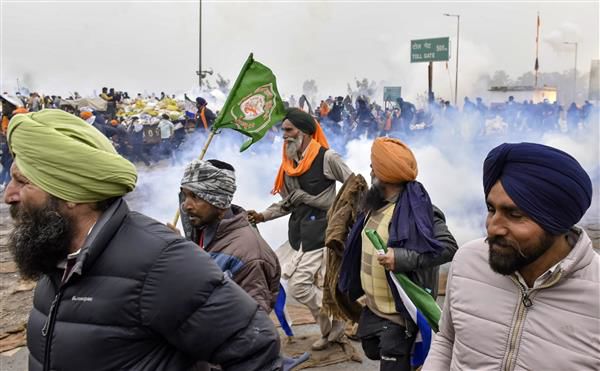
Earlier, Dallewal and Pandher said the protesting farmers, who have been camping at two border points between Punjab and Haryana after they were stopped by security personnel, will march towards Delhi in a peaceful manner.
The farmer leaders also urged the Central government to remove barricades and blockades at the Shambhu border and allow the farmers to march peacefully to Delhi.
“We are ready to die and be shot in the interest of the farmers of the country as it is now not a fight for farmers from Punjab but of the whole nation,” the leaders said.
“If any standoff happens… it can turn ugly, as farmers are adamant to reach Delhi and we will only proceed peacefully. But if they open fire at us or use force; then whatever happens will be the responsibility of those who had put up these barricades,” they added. 17:24 21 FebFissures in farmer unions as 2 main unions blame morcha leaders for farmer’s death
17:24 21 FebFissures in farmer unions as 2 main unions blame morcha leaders for farmer’s death
All India Kisan Federation chief Prem Singh Bhangu and Bhartiya Kisan union chief Balbir singh Rajjewal said the death of the young farmer is due to the incompetence of the union leaders leading the mob at the Dilli Chalo morcha.
“While the government is wrong in using force, the union leaders are equally responsible for misleading the youngsters,” they said.
Fissures in farmer unions as two main unions blamed morcha leaders for the farmer’s death. 16:47 21 FebSamyukta Kisan Morcha calls a meeting on Thursday
16:47 21 FebSamyukta Kisan Morcha calls a meeting on Thursday
Bharatiya Kisan Union (BKU) leader Rakesh Tikait says, “This movement will continue, a solution can be found only through dialogue… The SKM will meet tomorrow and decide what to do.” 16:37 21 FebShambhu tense as farmer leaders announce to enter Haryana.
16:37 21 FebShambhu tense as farmer leaders announce to enter Haryana.
Following protests after the death of a young farmer, Shambhu is tense as farmer leaders Dallewal and Pandher announce to enter Haryana.
Clashes between cops and farmers escalate as more tear gas shells fired. 15:54 21 Feb20-year-old protester died after sustaining injuries
15:54 21 Feb20-year-old protester died after sustaining injuries
The deceased identified as Shubhkaran Singh of Baloke in Bathinda succumbed to his injuries at Patiala’s Rajindra hospital. He was allegedly hit by a rubber bullet.
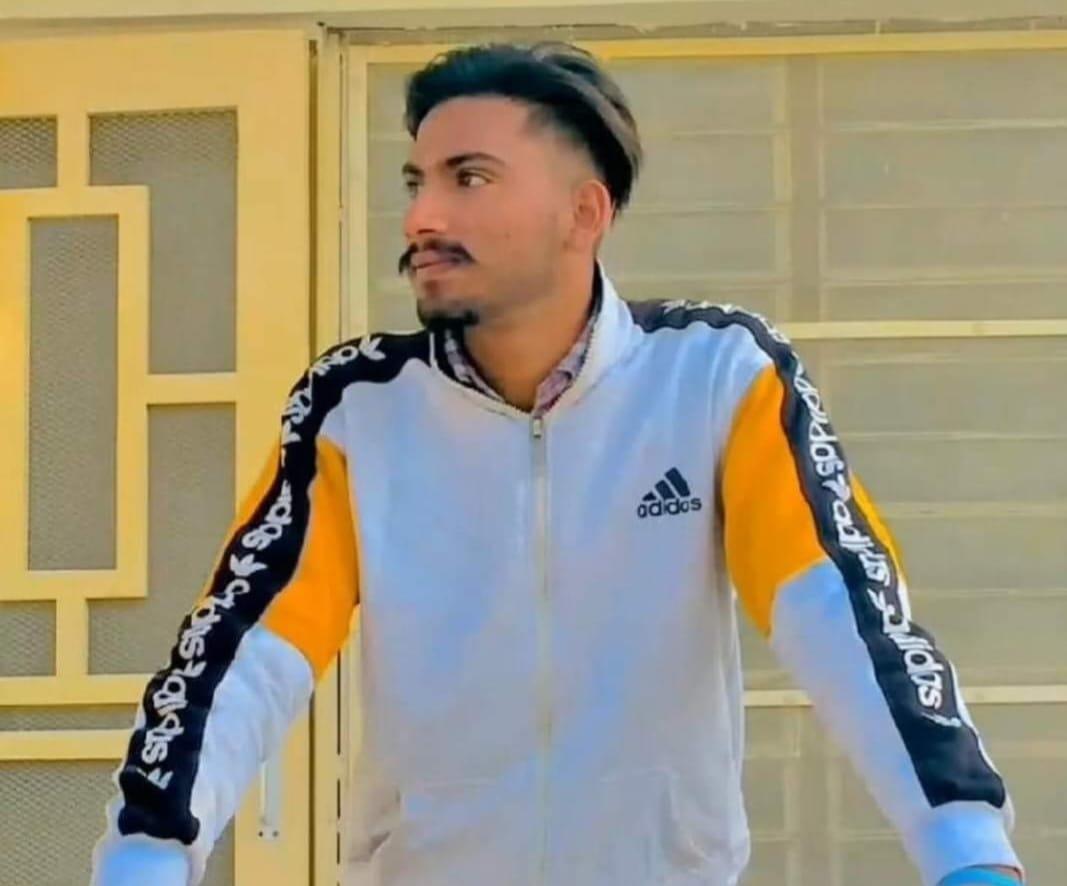
 15:35 21 FebPunjab Police request Haryana not to use force on farmershttps://platform.twitter.com/embed/Tweet.html?dnt=false&embedId=twitter-widget-0&features=eyJ0ZndfdGltZWxpbmVfbGlzdCI6eyJidWNrZXQiOltdLCJ2ZXJzaW9uIjpudWxsfSwidGZ3X2ZvbGxvd2VyX2NvdW50X3N1bnNldCI6eyJidWNrZXQiOnRydWUsInZlcnNpb24iOm51bGx9LCJ0ZndfdHdlZXRfZWRpdF9iYWNrZW5kIjp7ImJ1Y2tldCI6Im9uIiwidmVyc2lvbiI6bnVsbH0sInRmd19yZWZzcmNfc2Vzc2lvbiI6eyJidWNrZXQiOiJvbiIsInZlcnNpb24iOm51bGx9LCJ0ZndfZm9zbnJfc29mdF9pbnRlcnZlbnRpb25zX2VuYWJsZWQiOnsiYnVja2V0Ijoib24iLCJ2ZXJzaW9uIjpudWxsfSwidGZ3X21peGVkX21lZGlhXzE1ODk3Ijp7ImJ1Y2tldCI6InRyZWF0bWVudCIsInZlcnNpb24iOm51bGx9LCJ0ZndfZXhwZXJpbWVudHNfY29va2llX2V4cGlyYXRpb24iOnsiYnVja2V0IjoxMjA5NjAwLCJ2ZXJzaW9uIjpudWxsfSwidGZ3X3Nob3dfYmlyZHdhdGNoX3Bpdm90c19lbmFibGVkIjp7ImJ1Y2tldCI6Im9uIiwidmVyc2lvbiI6bnVsbH0sInRmd19kdXBsaWNhdGVfc2NyaWJlc190b19zZXR0aW5ncyI6eyJidWNrZXQiOiJvbiIsInZlcnNpb24iOm51bGx9LCJ0ZndfdXNlX3Byb2ZpbGVfaW1hZ2Vfc2hhcGVfZW5hYmxlZCI6eyJidWNrZXQiOiJvbiIsInZlcnNpb24iOm51bGx9LCJ0ZndfdmlkZW9faGxzX2R5bmFtaWNfbWFuaWZlc3RzXzE1MDgyIjp7ImJ1Y2tldCI6InRydWVfYml0cmF0ZSIsInZlcnNpb24iOm51bGx9LCJ0ZndfbGVnYWN5X3RpbWVsaW5lX3N1bnNldCI6eyJidWNrZXQiOnRydWUsInZlcnNpb24iOm51bGx9LCJ0ZndfdHdlZXRfZWRpdF9mcm9udGVuZCI6eyJidWNrZXQiOiJvbiIsInZlcnNpb24iOm51bGx9fQ%3D%3D&frame=false&hideCard=false&hideThread=false&id=1760229054077088142&lang=en&origin=https%3A%2F%2Fwww.tribuneindia.com%2Fnews%2Fpunjab%2Ffarmers-protest-live-will-march-towards-delhi-peacefully-says-farmer-leader-jagjit-singh-dallewal-593092&sessionId=0998e279421052f5d98cee0030103fe5edb9aaf2&siteScreenName=%26via%3Dthetribunechd&theme=light&widgetsVersion=2615f7e52b7e0%3A1702314776716&width=550px
15:35 21 FebPunjab Police request Haryana not to use force on farmershttps://platform.twitter.com/embed/Tweet.html?dnt=false&embedId=twitter-widget-0&features=eyJ0ZndfdGltZWxpbmVfbGlzdCI6eyJidWNrZXQiOltdLCJ2ZXJzaW9uIjpudWxsfSwidGZ3X2ZvbGxvd2VyX2NvdW50X3N1bnNldCI6eyJidWNrZXQiOnRydWUsInZlcnNpb24iOm51bGx9LCJ0ZndfdHdlZXRfZWRpdF9iYWNrZW5kIjp7ImJ1Y2tldCI6Im9uIiwidmVyc2lvbiI6bnVsbH0sInRmd19yZWZzcmNfc2Vzc2lvbiI6eyJidWNrZXQiOiJvbiIsInZlcnNpb24iOm51bGx9LCJ0ZndfZm9zbnJfc29mdF9pbnRlcnZlbnRpb25zX2VuYWJsZWQiOnsiYnVja2V0Ijoib24iLCJ2ZXJzaW9uIjpudWxsfSwidGZ3X21peGVkX21lZGlhXzE1ODk3Ijp7ImJ1Y2tldCI6InRyZWF0bWVudCIsInZlcnNpb24iOm51bGx9LCJ0ZndfZXhwZXJpbWVudHNfY29va2llX2V4cGlyYXRpb24iOnsiYnVja2V0IjoxMjA5NjAwLCJ2ZXJzaW9uIjpudWxsfSwidGZ3X3Nob3dfYmlyZHdhdGNoX3Bpdm90c19lbmFibGVkIjp7ImJ1Y2tldCI6Im9uIiwidmVyc2lvbiI6bnVsbH0sInRmd19kdXBsaWNhdGVfc2NyaWJlc190b19zZXR0aW5ncyI6eyJidWNrZXQiOiJvbiIsInZlcnNpb24iOm51bGx9LCJ0ZndfdXNlX3Byb2ZpbGVfaW1hZ2Vfc2hhcGVfZW5hYmxlZCI6eyJidWNrZXQiOiJvbiIsInZlcnNpb24iOm51bGx9LCJ0ZndfdmlkZW9faGxzX2R5bmFtaWNfbWFuaWZlc3RzXzE1MDgyIjp7ImJ1Y2tldCI6InRydWVfYml0cmF0ZSIsInZlcnNpb24iOm51bGx9LCJ0ZndfbGVnYWN5X3RpbWVsaW5lX3N1bnNldCI6eyJidWNrZXQiOnRydWUsInZlcnNpb24iOm51bGx9LCJ0ZndfdHdlZXRfZWRpdF9mcm9udGVuZCI6eyJidWNrZXQiOiJvbiIsInZlcnNpb24iOm51bGx9fQ%3D%3D&frame=false&hideCard=false&hideThread=false&id=1760229054077088142&lang=en&origin=https%3A%2F%2Fwww.tribuneindia.com%2Fnews%2Fpunjab%2Ffarmers-protest-live-will-march-towards-delhi-peacefully-says-farmer-leader-jagjit-singh-dallewal-593092&sessionId=0998e279421052f5d98cee0030103fe5edb9aaf2&siteScreenName=%26via%3Dthetribunechd&theme=light&widgetsVersion=2615f7e52b7e0%3A1702314776716&width=550px
 15:26 21 FebFarmer leader Dallewal rushes to Rajindra Hospital
15:26 21 FebFarmer leader Dallewal rushes to Rajindra Hospital
Farmer leader Jagjit Singh Dallewal rushed to the Rajindra Hospital to inquire about the injured farmer.
“If in case the news about his death is confirmed, then there is no point talking to the Central Government. We were holding talks with some officials when we got this information. We are going to inquire and then comment,” he said on reported death of a farmer. 15:19 21 FebOne farmer referred to Patiala hospital
15:19 21 FebOne farmer referred to Patiala hospital
Sangrur Civil surgeon Dr Kirpal Singh says a 26-year-old youth sustained injuries in the head and has been referred to Rajindra Hospital, Patiala. 15:18 21 Feb26 injured as police fire tear gas, rubber bullets
15:18 21 Feb26 injured as police fire tear gas, rubber bullets
At least 26 farmers have been injured, after Haryana Police fired rubber bullets and lobbed tear gas shells, at Khanauri border. 13:46 21 FebTear gas shells continue on farmers
13:46 21 FebTear gas shells continue on farmers
Tear gas shells continue on farmers as many are still standing near barricades.
They are being thrown by drones and also fired by Haryana Police personnel. 13:00 21 FebBKU (Ekta-Ugrahan) supports farmer unions’ decision to reject Central Govt’s offer
13:00 21 FebBKU (Ekta-Ugrahan) supports farmer unions’ decision to reject Central Govt’s offer
Bharatiya Kisan Union (Ekta-Ugrahan) supports protesting farmer unions’ decision to reject Central Government’s offer of giving 5 years MSP through contract farming to those who sow five crops instead of cultivating paddy and wheat. 12:52 21 FebCentral Govt says ready to hold fifth round of talks with farmers
12:52 21 FebCentral Govt says ready to hold fifth round of talks with farmers
Government ready to hold 5th round of talks with protesting farmers, says Agriculture Minister Arjun Munda 12:07 21 FebPunjab to write to Haryana counterpart over sudden use of tear gas shells
12:07 21 FebPunjab to write to Haryana counterpart over sudden use of tear gas shells
Punjab Police likely to write to Haryana counterpart over sudden use of tear gas shells when the farmer leaders were only giving speeches, and had not started moving towards the barricades.
“It was a sudden attack on the farmers”, said Patiala Range DIG HS Bhullar. 11:47 21 FebCompete chaos as more tear gas shells fired
11:47 21 FebCompete chaos as more tear gas shells fired
Some farmers fell while trying to escape the tear gas shells, while youngsters take cover behind the boulders placed by police. 11:45 21 FebTear gas shells fired at protesting farmers
11:45 21 FebTear gas shells fired at protesting farmers
Haryana Police lob tear gas shells on protesting farmers. A dozen of shells landed on Punjab side. 11:12 21 FebHaryana Police urge farmers to not use tractor-trailers
11:12 21 FebHaryana Police urge farmers to not use tractor-trailers 11:05 21 FebPunjab Police restrict movement of traffic towards Shambhu
11:05 21 FebPunjab Police restrict movement of traffic towards Shambhu
Punjab Police officials have restricted the movement of traffic towards Shambhu now.
Except vehicles of farmers, all other vehicles are being diverted from near Rajpura. 10:59 21 FebPunjab govt tried to impress upon union leaders not to use excess force as it could lead to retaliation from Haryana side
10:59 21 FebPunjab govt tried to impress upon union leaders not to use excess force as it could lead to retaliation from Haryana side
Fearing action in Haryana, Punjab Govt tells protesters to show restraint 10:51 21 FebBKU (Tikait) warns ongoing agitation could surpass duration of previous protest
10:51 21 FebBKU (Tikait) warns ongoing agitation could surpass duration of previous protest
Farmers’ agitation may be longer this time: Rakesh Tikait 10:48 21 FebHigh Court observes that tractor-trailers could not ply on highways under provisions of Motor Vehicles Act
10:48 21 FebHigh Court observes that tractor-trailers could not ply on highways under provisions of Motor Vehicles Act
Tractor-trailers can’t ply on highways: Punjab and Haryana High Court 10:41 21 FebHospitals put on alert in Patiala, Mohali
10:41 21 FebHospitals put on alert in Patiala, Mohali
Hospitals have been put on alert in Patiala, Mohali and Fatehgarh Sahib in wake of a likely clash between the farmer unions and Haryana Police personnel. 10:35 21 FebSituation tense at Shambhu, Punjab officials hold meeting with farm leaders
10:35 21 FebSituation tense at Shambhu, Punjab officials hold meeting with farm leaders
Situation is tense as large number of farmers have started gathering at the Shambhu border.
The farm leaders are holding a discussion with the Punjab government officials. 10:16 21 FebTraffic disrupted on Delhi-Gurugram, several other roads
10:16 21 FebTraffic disrupted on Delhi-Gurugram, several other roads
Traffic has also been hit on Delhi-Gurugram, Delhi-Bahadurgarh and several other roads after heavy deployment of police to ensure law and order. 10:11 21 FebMulti-layered barricades of concrete, iron nails at Delhi-Haryana border points
10:11 21 FebMulti-layered barricades of concrete, iron nails at Delhi-Haryana border points
The two border points of Delhi and Haryana – Tikri and Singhu – are sealed with the heavy deployment of police personnel and paramilitary forces and multi-layered barricades of concrete and iron nails.
Two lanes of the Ghazipur border have also been shut with multi-layer barricades and police personnel. 10:08 21 FebSecurity beefed up in Delhi, borders
10:08 21 FebSecurity beefed up in Delhi, borders
The Delhi Police has beefed up security in the national capital and directed its personnel to ensure strict vigil at Tikri, Singhu and Ghazipur borders.
Deputy Commissioner of Police (outer) Jimmy Chiram says there is sufficient deployment of the force, besides paramilitary personnel, at the Delhi-Haryana borders. 10:02 21 FebSecurity tightened at Shambhu border
10:02 21 FebSecurity tightened at Shambhu border
Amid heavy deployment by Haryana, Punjab has also deputed hundreds of police personnel at the Shambhu border to ensure law and order. 09:55 21 FebFarmer leaders expected to reach Shambhu border around 10:30 am
09:55 21 FebFarmer leaders expected to reach Shambhu border around 10:30 am
Farmer leaders are expected to reach the Shambhu border around 10:30 am and address the protesting farmers ahead of the ‘Dilli Chalo’ march.
The Tribune News Service brings you the latest news, analysis and insights from the region, India and around the world. Follow the Tribune News Service for a wide-ranging coverage of events as they unfold, with perspective and clarity.

























































